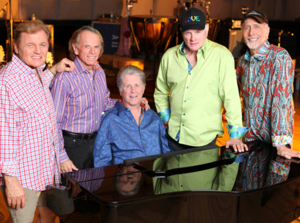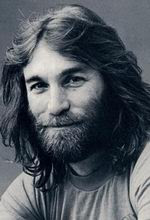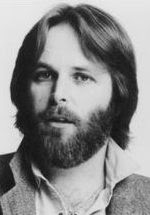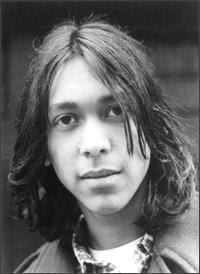 |
| October 2011 -> tonepublications.com |
All text is here below:
You want what he’s having? Why, of course. Upon listening to the bizarre, eccentric, neurotic, enigmatic, imaginative, acid-drenched, peerless SMiLE Sessions, it’s easy to understand why anyone might desire the spiritual nutrition and drug diet that fed Beach Boys leader Brian Wilson during the ensemble’s 1966-67 recording period. While previous efforts contain snippets of the fabled material -- and Wilson finished SMiLE in 2004 with a different cast -- collectors, fans, and folks curious about the most mythological album (n)ever issued have clamored for its release for decades. Everyone finally gets his or her wish -- mostly.
Available in multiple configurations, The SMiLE Sessions 2CD version boasts an estimation of the abandoned SMiLE album as well as a disc of session highlights; the extravagant 5CD box features the aforementioned and three additional discs of session material. (A 2LP edition contains only the album and five bonus cuts.) Again: The 19-track SMiLE included here is not considered a technical album as Wilson and company never completed audio’s equivalent of the Loch Ness Monster. Hence, what’s presented equates to a semblance agreed upon by group members Wilson, Mike Love, and Al Jardine. All were involved in a painstaking project that demanded producers Mark Linett and Alan Boyd consult upwards of 70 master reels of tape while tackling the mind-numbing tasks of putting the group’s sonic “modules” in a sensible order as well as piecing together fragments into coherent songs.
In that simply hearing the constant fits and starts occasionally feels infuriating, it’s relatively impossible to imagine the patience Linett and Boyd employed to bring The SMiLE Sessions to light. Indeed, one of the more illuminating aspects of the 5CD collection has little to do with the music. Rather, enlightenment stems from spying on Wilson’s studio banter and recognizing the ad-infinitum degree to which the obsessive-compulsive tunesmith forced his mates and Los Angeles’ finest studio hands to stop/repeat/stop/repeat/stop in a quest for “perfect” takes and sounds he envisioned in his mind. Gorgeous baroque melodies, heavenly harmonies, psychedelic freedom, experimental techniques, humanist spirituality, and sophisticated concoctions of pop, choral, jazz, cabaret, and R&B on SMiLE aside, insight into both Wilson’s methods and madness in the recording studios proves most compelling.
While certain camps maintain that label politics and contract disputes accounted for the collapse of SMiLE, The SMiLE Sessions confirms otherwise. Consider: The fifth disc contains nothing but renditions of the 1966 stand-alone single “Good Vibrations,” two dozen in all, the labors ultimately yielding an indisputable slice of modular-constructed pop genius and, unfortunately, triggering within the tormented Wilson an insatiable thirst to make every subsequent Beach Boys song as glorious, symphonic, and grand.
And so there are vocal coaching lessons, trials of members crooning while lying on their back, playful moans, microphones dropped into water. There are fades, preludes to fades, verse remakes, alternate introductions, barbershop vocal sections, chorus vocal sections, overdub mixes, and acapella takes devoted to one tune -- each separate track lasting between 25 seconds and several minutes. Wilson’s mind keeps changing. So too, then, do his instructions and inclinations. How nobody managed to sock him out of frustration remains a marvel on par with the composer’s finest arrangements. It all leads one to believe that Wilson, particularly in his compromised mental state, never would’ve arrived at a point he would’ve deemed satisfying. SMiLE was destined to be incomplete.
Moreover, the set’s tremendously informative essays expounds upon the notion that, recalling the era’s technological limitations associated with tape splicing, executing the countless sequencing and re-sequencing duties in the face of tireless re-recording and editing burdens would have likely taken years -- especially given Wilson’s propensity for fixes and alterations, which generally required having to again start a mix from scratch. To wit: “Good Vibrations” required almost six months to finalize. In his notes, Boyd, a veteran documentary filmmaker, calls the from-the-vaults reissue “the hardest project I’ve ever worked on” and observes “many of the songs were like little Frankenstein monsters, musical beings built from the spare parts in Dr. Linett’s audio laboratory.”
To that extent, the presence of a definitively researched SMiLE Sessions Sessionography guides listeners through the creative practices and vast sources. Undoubtedly, it also stands to rankle those who believe their bootleg versions to reflect the correct details.
Sonically, the main album is presented in mono and the session contents in stereo. In preparation for HDCD, the original analog 4-track and 8-track session tapes were transferred to high-resolution digital, with the final masters created at 88.2kHz. What a trip.
—Bob Gendron


























